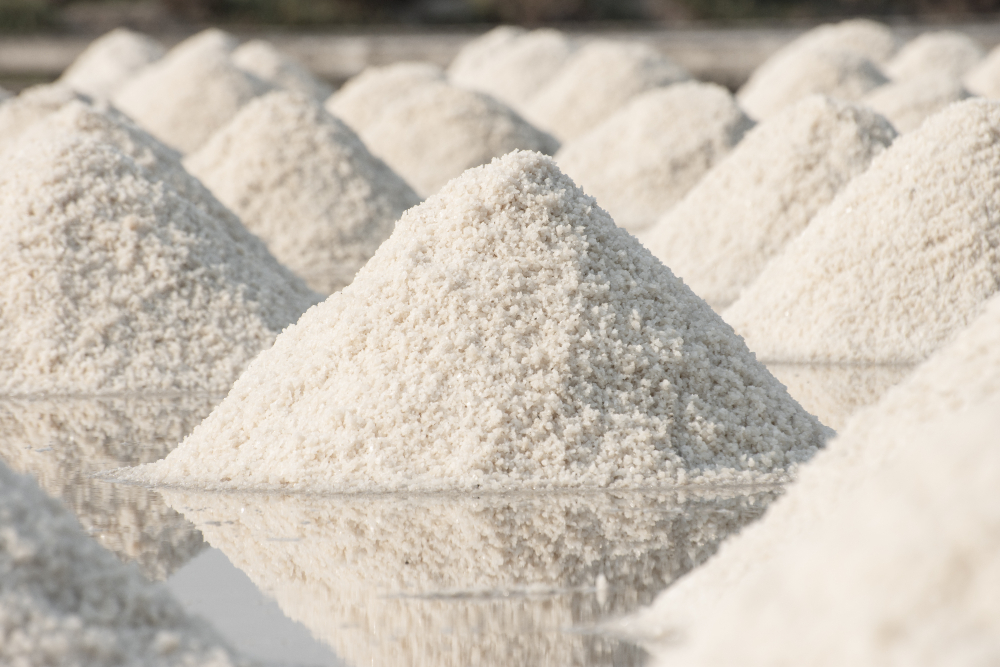
Introduction to Silica Sand
Silica sand is a naturally occurring material composed primarily of silicon dioxide (SiO₂). It is one of the most abundant minerals on Earth and is found in various forms, including quartz, sandstones, and other rock formations. Silica sand is highly valued for its purity, durability, and numerous industrial applications.
Physical and Chemical Properties of Silica Sand
Silica sand is characterized by the following key properties:
High Silicon Dioxide Content: Typically contains more than 95% SiO₂.
Granular Composition: Available in fine, medium, and coarse grades.
High Melting Point: Approximately 1713°C (3115°F), making it suitable for high-temperature applications.
Hardness: Measured at 7 on the Mohs hardness scale, ensuring durability in various applications.
Inert Nature: Chemically stable, non-toxic, and resistant to weathering and chemical reactions.
Types of Silica Sand
Silica sand exists in different forms based on its origin, processing method, and intended use:
1. Industrial Silica Sand
Used in glassmaking, foundry work, and construction.
Requires high purity and minimal impurities.
2. Glass-Grade Silica Sand
Contains 99% or more SiO₂.
Used in flat glass, container glass, and specialty glass industries.
3. Foundry Silica Sand
Utilized in metal casting industries.
Must have precise grain distribution and high refractoriness.
4. Frac Sand
Used in hydraulic fracturing (fracking) for oil and gas extraction.
Requires strong, round, and crush-resistant grains.
5. Construction Silica Sand
Commonly used in cement production, mortar, and concrete manufacturing.
Enhances strength and durability in building materials.
Industrial Applications of Silica Sand
1. Glass Manufacturing
Silica sand is the primary raw material in glass production. From windowpanes to bottles and optical fibers, it is indispensable in manufacturing high-quality, transparent, and durable glass products.
2. Foundry and Casting
In foundries, silica sand is used in the molding and core-making process for casting metals. Its high thermal resistance and fine grains help achieve precise castings with smooth finishes.
3. Construction and Building Materials
Silica sand plays a crucial role in the construction industry, being used in:
Concrete and Mortar: Enhances compressive strength.
Bricks and Tiles: Increases durability and aesthetic appeal.
Road Base and Asphalt: Improves road quality and longevity.
4. Hydraulic Fracturing (Fracking)
In the oil and gas industry, silica sand is used as proppant in hydraulic fracturing. The strong, durable grains hold open fractures in rock formations, allowing oil and gas to flow efficiently.
5. Water Filtration
Due to its high purity and permeability, silica sand is extensively used in water filtration systems, including:
Drinking water treatment plants
Swimming pools
Industrial wastewater treatment
6. Sports and Recreation
Silica sand is widely used in golf courses, artificial turf fields, and beach sand replenishment. It provides stability, improves drainage, and enhances the performance of sports surfaces.
7. Chemical and Industrial Uses
Silica sand is an essential ingredient in various chemical processes, including:
Silicon production for electronics and semiconductors.
Manufacturing sodium silicate, silica gel, and industrial abrasives.
Processing and Purification of Silica Sand
To meet industry standards, silica sand undergoes several processing steps:
Extraction: Mined from open pits or dredged from riverbeds.
Washing and Scrubbing: Removes clay, silt, and organic matter.
Screening and Classification: Ensures uniform grain size distribution.
Magnetic Separation: Removes iron contaminants.
Acid Leaching: Enhances purity by eliminating remaining impurities.
Drying and Packaging: Prepares silica sand for industrial applications.
Environmental and Safety Considerations
While silica sand is beneficial, it also poses certain environmental and health concerns:
Silica Dust Exposure: Prolonged inhalation of silica dust can lead to silicosis, a lung disease. Protective measures include ventilation systems, masks, and wet processing techniques.
Sustainable Mining Practices: Efforts are being made to reclaim mined land, reduce water consumption, and implement eco-friendly mining techniques.
Regulations and Compliance: Industries must adhere to OSHA, EPA, and other regulatory standards for handling and processing silica sand safely.
Future Trends in the Silica Sand Industry
1. Growth in Renewable Energy
Silica sand is essential for solar panel manufacturing, boosting demand in the renewable energy sector.
2. Increased Demand in Electronics
With advancements in semiconductors and optical fibers, the need for high-purity silica sand continues to rise.
3. Innovations in Frac Sand Use
The oil and gas industry is exploring synthetic and coated silica sand to improve efficiency in fracking operations.
4. Sustainable Alternatives
Efforts are being made to develop recycled and synthetic alternatives to silica sand for environmental sustainability.
Conclusion
Silica sand is a versatile and essential raw material in numerous industries, ranging from glassmaking and construction to water filtration and fracking. With advancements in technology and sustainable mining practices, the silica sand industry continues to evolve, meeting the growing demand while addressing environmental concerns.












